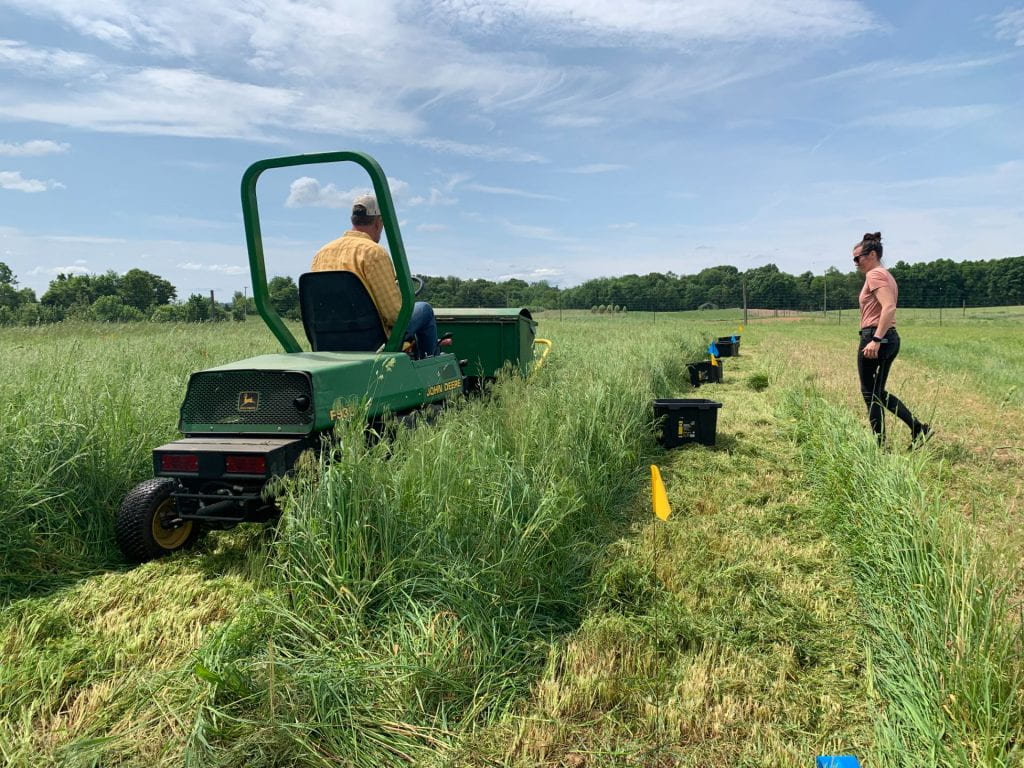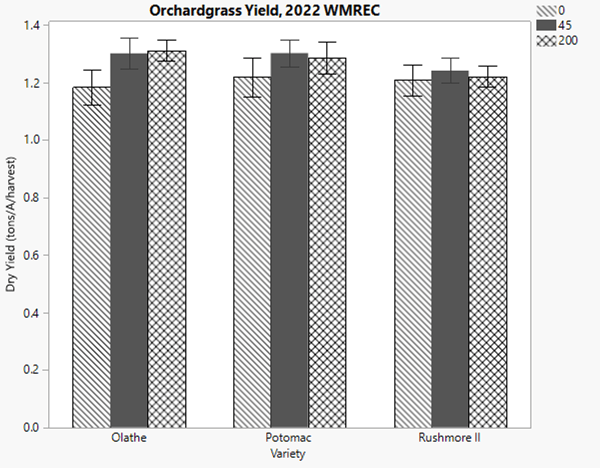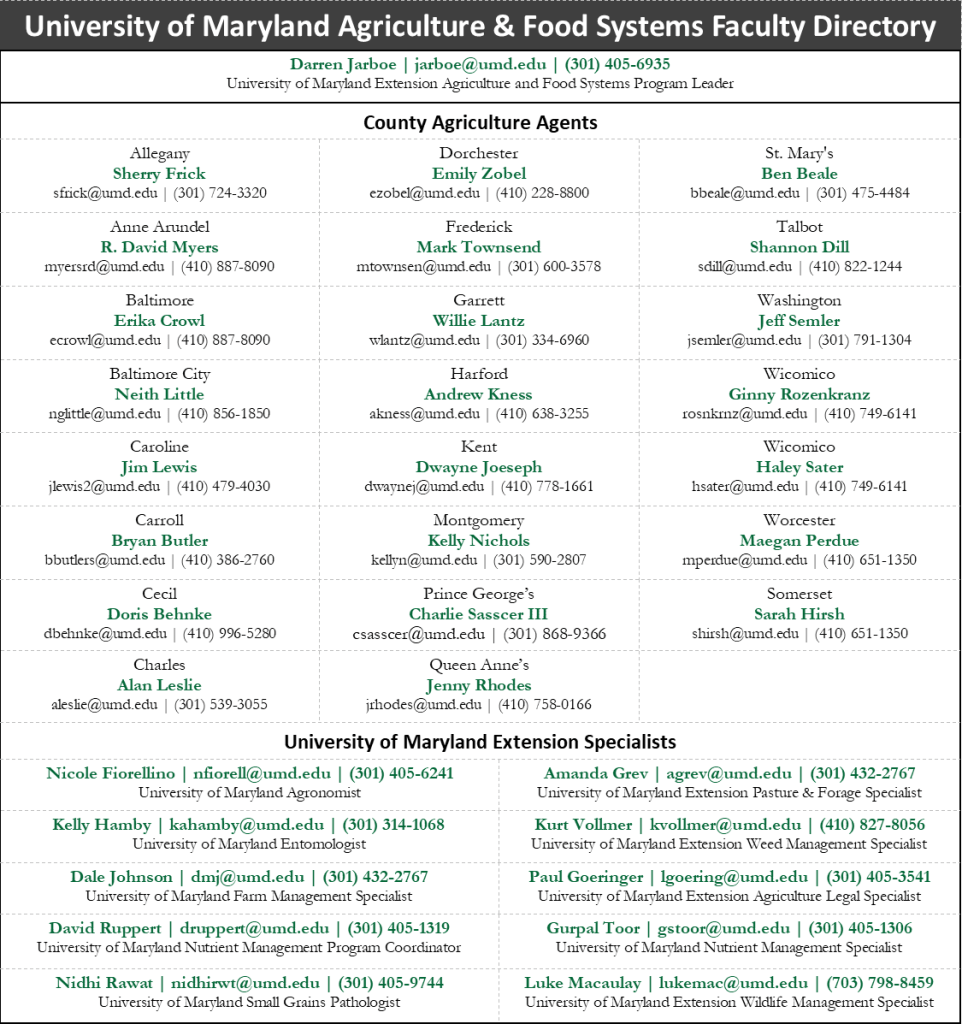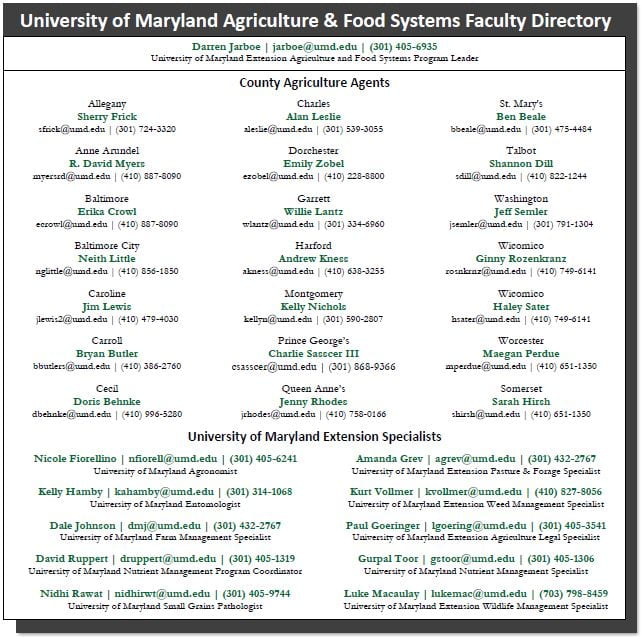 Reports are for crop conditions up to November 16, 2023.
Reports are for crop conditions up to November 16, 2023.
Western Maryland
Harvest is winding down. Nearly all of the corn and full-season beans are in the bins. Some of the double-crop beans weren’t even worth the cost of the fuel to harvest them. Cover crops are looking good as is the commodity wheat and barely. There are still a few acres that will get some rye. Manure is flying as we race to beat the December 15 deadline. Hay stocks are short but FSA has had the county designated a disaster area so there is some assistance available to make up for the shortfalls. Yields are all over the place depending on when the crop was planted and when the showers arrived. As always everyone is looking forward to 2024 being a better year.—Jeff Semler, Washington Co.
Central Maryland
No Report.
Northern Maryland
2023 harvest has been about as smooth as anyone could ask for with very few weather interruptions. All but a few acres of corn and double-crop soybeans remain. Some rains here and there have been just enough to get cover crops and small grains off to a good start, especially those fields planted early, which have put on substantial growth and tillers. Corn yields have been very strong across most of the region and even record-setting on some farms. Soybeans on the other hand are average to below average in many fields and double-crop beans range from very poor to good. All things considered, yields (especially corn) were impressive considering how dry we started and finished the season; timely rains sure do make or break yields!—Andy Kness, Harford Co.
Upper and Mid Shore
Both corn and soybean harvest is finishing up. The high yields across the region have made grain delivery the last fewPreview (opens in a new tab) weeks a little frustrating. Tanks and piles are full. Granaries have been working to move grain out, but purchasing grain with reduced hours. On a positive note, that seems to be resolved now. The weather has cooperated to make harvest as easy and stress free as possible. We are finally receiving some rain to replenish ground water. Small grains are off to a good start.—Jim Lewis, Caroline Co.
Lower Shore
Corn harvest is 95% complete. Most full season soybean has been harvested. It has been very dry in the region, and soybean moisture is below 13%. Soybeans are dusty and farmers are blowing off combines due to fire hazard. Soybean yields are coming in average to slightly above average depending on how much rain fields received. Double crop soybean following wheat is still a few weeks from being harvested. Wheat planting is underway and farmers are planting into dry fields. In many fields, cover crops are already seeing substantial growth and some farmers continue to drill winter cereal cover crops following soybean harvest.—Sarah Hirsh, Somerset Co.
Southern Maryland
Wrap-up: The last acres of soybeans and corn are making their way off fields as we wind into the last chapters of 2023 season. The season started early, with ideal planting conditions in early April. Many growers planted beans and corn during that early window. Conditions turned dry and cooler through the latter part of April and into May and June. Growers struggled with annual ryegrass burndown control. Rains returned as we turned the page into summer and crops responded well. Concerns over the wheat and barley crop, which appeared uneven through he late spring, were unfounded. The small grain crop was of great quality and yield. Growers struggled during the later harvest period as rains delayed harvest well into July. Most corn made it through the pollination window with adequate moisture. Dry conditions returned once again in August and September, resulting in drought stress to beans and corn. Corn harvest started a little earlier than normal. Overall yield reports are above average, and something to be grateful for given the dry conditions later in the season. Beans were more of a mixed bag. Early planted beans performed well for the second year in a row, with most of the crop made by the time the rain ran out. Double crops beans ranged from very poor to very good depending on rain timing and stage of beans. The fall harvest season has been good. Wheat and barley has germinated well and is growing fast with warmer than normal fall temperatures.—Ben Beale, St. Mary’s Co.





